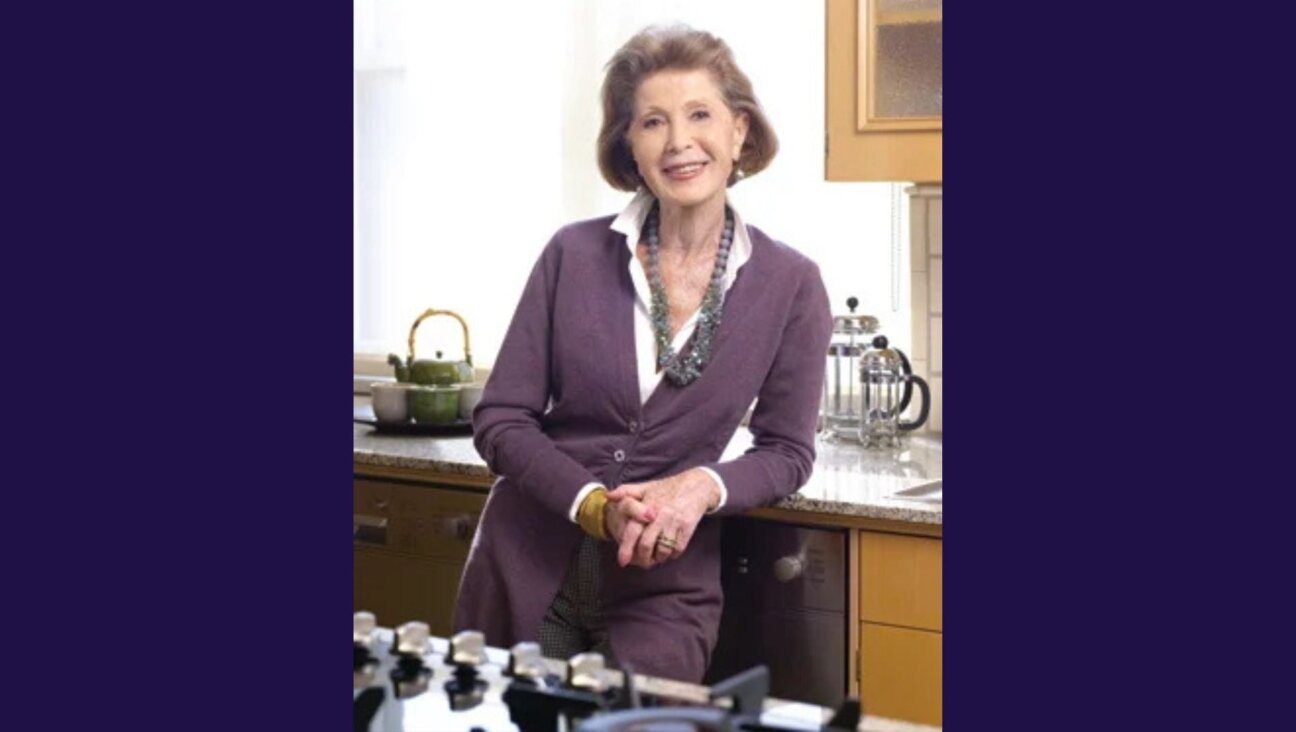GROUND ZERO AS A LAB FOR NEW ART
The recent selection of Daniel Libeskind as one of two finalists in the competition to redesign the site of the former World Trade Center in lower Manhattan is, at the most obvious level, a personal triumph that testifies to his status as one of the world’s most respected architects. But it also highlights the unprecedented rise to prominence in the last generation of Jews in the Western architectural profession.
Until recently, Jewish achievements in the field of architecture paled in comparison with those attained in other cultural fields, such as literature, film, music and even painting. Although scattered figures such as Erich Mendelsohn, Richard Neutra and Louis Kahn gained notable recognition as masters of modern architecture in the first half of the century, it has really only been since the rise of postmodernism in the 1970s that Jewish architects have attained notable visibility and prominence as a group. Thus, any survey of contemporary architecture today would be incomplete without mentioning — besides Libeskind — such Jewish architects as Frank Gehry, Peter Eisenman, Richard Meier, James Ingo Freed, Eric Owen Moss, Moshe Safdie, Robert A.M. Stern and Zvi Hecker, among others.
Further still, the Jewish architectural productivity of recent years has been more manifestly “Jewish” in orientation and expression than in earlier generations. To be sure, the quest to define “Jewish architecture” — like Jewish art, music or literature — is a quixotic one destined to end in frustration. But even if no monolithically “Jewish” style of architecture can be identified, it is nevertheless significant that Jewish concerns have increasingly begun to inform both the theoretical and aesthetic agendas of Jewish architects.
The best evidence of this trend — and the most significant in light of the current competition to shape the future form of Ground Zero — is the architectural movement known as deconstructivism. Emerging in the late 1980s and early 1990s, in no small part due to the efforts of two of its leading proponents, Libeskind and Eisenman, deconstructivism was a radical movement that cited the massive rupture in Western civilization caused by the Holocaust as grounds for rethinking and “deconstructing” the entire discipline of Western architecture. Sharing the postmodern belief that the Holocaust’s specifically modern origins require the abandonment of the “project of modernity,” Libeskind and Eisenman in their many theoretical writings argued that the Nazi genocide provided compelling reason to abandon traditional architectural practice and to instead embrace an architecture of fragmentation, de-centeredness and loss that reflected the reality of the postmodern, post-humanist, post-Holocaust world. For more than a few years, deconstructivism’s theoretical and aesthetic demands remained consigned to the drafting table. But since the turn of the millennium, deconstructivist projects have begun to be realized in physical form — most prominently Libeskind’s recently completed Jewish Museum in Berlin (not by chance the same location for Eisenman’s current work in progress, Germany’s national Holocaust memorial).
Given deconstructivism’s theoretical roots in the Nazi genocide of the Jews, it is no surprise that it has lent itself well to serving as a commemorative form of architecture in Germany. But this same commitment to commemorating loss has made it uniquely poised to offer a compelling solution to the question of how to reconstruct Ground Zero in the wake of September 11.
Significantly, Libeskind and Eisenman both provided separate entries to the initial competition to redesign the site of the former World Trade Center. In September of 2002, Eisenman submitted a deconstructivist design to the New York Times-sponsored architectural forum for three new office buildings along West Street, whose crumpled form, suggesting imminent collapse, powerfully evoked the violence of the September 11 terrorist attacks. Eisenman’s subsequent collaborative design with Richard Meier for the Lower Manhattan Development Corporation’s official competition tempered his deconstructivist style in favor of a cooler modernist aesthetic reminiscent of his work as a member of the neo-rationalist “New York Five” in the 1970s. But this design, too — a mammoth L-shaped mega-structure composed of intersecting horizontal and vertical elements — seemed to evoke the by now iconic splayed ruins of the trade center’s steel skeleton and thus revealed its roots in the same architecture of memory.
In the end, of course, Eisenman’s proposals were passed over by the jury in favor of Libeskind’s (as well as the submission of the other finalist, Think Design). Libeskind’s design was hailed for preserving the footprints of the twin towers together with the remnants of the pit at Ground Zero, transforming both into a powerful memento mori — a memorial commemorating death at the scarred site of its horrific occurrence. Libeskind also planned soaring skyscrapers flanking the memorial site, offering a more uplifting symbolic message confirming the enduring vitality of American political traditions — epitomized by his symbolically proportioned 1,776-foot-high tower draped with hanging gardens. In its totality, his design was, like his work in general, strongly informed by his deconstructivist philosophy rooted in the necessity of commemorating loss.
As is to be expected with such a high-profile design, Libeskind’s proposal has sparked controversy. Already in late September, his thoughts on the future of the site were condemned at a public forum at the New York Historical Society by The New Republic’s literary editor, Leon Wieseltier, who accused Libeskind of egotistically rushing to transform a proper site of mourning into “a theme park for advanced architectural taste.” More recently, New York Times architecture critic Herbert Muschamp criticized Libeskind’s design for the opposite reason — that it was “astonishingly tasteless” in proposing that “a large piece of Manhattan be permanently dedicated to the artistic representation of enemy assault.” Whether accusing Libeskind of a shortage or a surfeit of commemorative piety, such contradictory criticisms reflect the ongoing disagreement about whether the future of Ground Zero should be primarily devoted to commemorating catastrophe or ringing in renewal. At the same time, though, they also testify to the evocative power of Libeskind’s design.
Ultimately, the final decision for the future of Ground Zero is at least several days away, and in all probability, the site’s ultimate form will not be settled for many months. But should Libeskind’s design be realized in a form comparable to what he recently submitted, it would represent a notable first in the history of Jewish architectural achievement. Neither in modern American nor modern European history has a Jewish architect been entrusted with designing a site possessing the national prominence destined to be associated with the future buildings at Ground Zero. Should Daniel Libeskind succeed in gaining the commission, his design will represent the timely application of an architectural philosophy molded by the paradigmatic rupture of modern Jewish history — the Holocaust — to an architectural challenge unprecedented in American history. In the end, the traumas of Jewish memory may help to shape the future contours of American memory.















